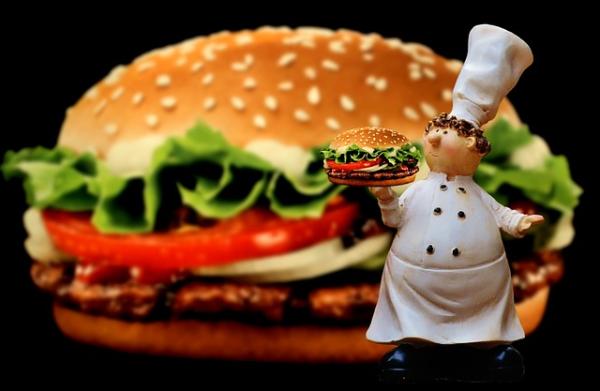Plant Based News [1], published an article entitled Impossible Foods CEO speaks Out Over Animal Testing Row: ‘It was an agonizing decision.’ Here is the first breathless sentence, “Impossible Foods boss Pat Brown has addressed the controversy of his company testing a product on animals - calling the move a difficult choice between 'the greater good and ideological purity.' [emphasis mine] It is time to unpack the statement.
We have before us an ethical dilemma. Impossible Burgers sells an entirely plant-based burger that differentiates itself by compounding it in a way that “it bleeds” so that the red juices we might associate with a juicy burger come from a component of soybean’s root, soy leghemoglobin (SLH). To produce their burger, SLH is ‘bio-engineered,’ that is the genetic information from the soy plant is inserted into yeast that makes sufficient quantities of SLH for commercial production. [2]
Impossible Foods submitted their product for FDA approval. It is at this point when several decisions were made. First, Impossible Foods categorized SLH, based upon their testing, to be “generally recognized as safe” (GRAS) which is a legal, regulatory term for products that have been used for some time with no ill effects. The advantage of a GRAS product is that the company is the final arbiter of food safety, not the FDA. To the cynical among us, a GRAS classification avoids further scrutiny, and you can proceed quickly to market. [3] The company could instead have categorized SLH as a “food coloring” which would provoke far more scientific scrutiny and more importantly, significantly increase the “time to market.” After consideration of Impossible Foods scientific submissions the FDA ruled that SLH was not a GRAS product at all, but a food additive that required testing for toxicity and safety. And the only way to do that was to do testing using rats. As the president of Impossible Foods wrote:
“But we were confronted with an agonizing dilemma: We knew from our research that heme is absolutely essential to the sensory experience meat lovers crave. Replacing animals in the diets of meat lovers would absolutely require heme. So without the rat testing, our mission and the future of billions of animals whose future depends on its success was thwarted. We chose the least objectionable of the two choices available to us. … choosing the option that advances the greater good is more important to us than ideological purity.”
Here was a classic confrontation of the responsibility to do good (reducing our dependency on meat) and the duty not to do bad (sacrifice rats to receive FDA approval). The rats lost for our greater good and the continued viability of Impossible Foods. I think Pat Brown’s statement is heartfelt, that is the way it reads to me. But we should all acknowledge the inherent conflict of interest, not doing the studies not only is harmful to the greater good of cows but in more immediate terms, to the financial viability of Impossible Burger. You cannot survive simply with venture capitalist funding; you need to show a profit. And the controversy should remind us that being natural and being sustainable requires trade-offs and sometimes those trade-offs are difficult. Next time you hear of a controversy involving Golden Rice (rice genetically modified to provide Vitamin A) consider the ideologic purity of banning this product against the 2 million worldwide annual deaths or half million cases of blindness associated with Vitamin A deficiency.
[1] Plant Based News is self-described as “the latest news about animal rights, ethical consumerism, plant-based food trends and more!”
[2] Yes this is genetically modified, but are we splitting hairs? If a genetically modified organism yields an naturally occurring product, is the product genetically modified, tainted with technology? After all, we are not eating the genetically modified yeast. Does a second generation food product like SLH continue to be considered tainted?
[3] As a Silicon Valley start-up there is increasing pressure to show profitability.




